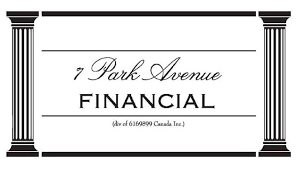|
How To Supercharge Access To Business Lines of Credit And Asset Loans
Innovative Solutions To Working Capital Challenges - We've Got Them!
YOU’RE LOOKING FOR BUSINESS LINES OF CREDIT AND ASSET LOANS!
Maximize Cash Flow: Canada's Asset-Based Credit Lines Unveiled
You've arrived at the right address! Welcome to 7 Park Avenue Financial
ARE YOU UNAWARE OR DISSATISFIED WITH YOUR CURRENT BUSINESS FINANCING OPTIONS?
CALL NOW - DIRECT LINE - 416 319 5769 - Let's talk or arrange a meeting to discuss your needs
Or Email us with any questions on Canadian Business Financing
EMAIL - sprokop@7parkavenuefinancial.com

Uncover the secrets within this article because it explains the shift towards ABLs as a superior financing choice for asset-rich Canadian businesses.
Leverage Your Assets: The ABL Edge in Canadian Financing
INTRODUCTION
In the dynamic world of Canadian business financing, there’s a powerful player that is changing the game for companies of all sizes: Asset-Based Lines of Credit (ABL).
While not a newcomer in the financial landscape, ABL remains an untapped resource for many, sitting quietly under the radar as a potent solution to a host of business financing dilemmas.
Canadian business financing has a new success story when it comes to business lines of credit and asset loans. Although it’s clearly been around for a while we run into tons of clients who haven’t even heard of the solution, but boy do they know they have a business financing problem! The 'supercharger' we are referring to is an ABL - an asset based business line of credit.
Understanding the Basics of ABL
Let's make sure you understand the basics first - and it’s actually quite simple. An ABL facility is a revolving line of credit, which, surprise, surprise, is typically offered by an institution other than a bank!
That’s what really surprises some of our clients. These business lines of credit, or asset, or asset loans are credit facilities providing access to revolving funds that support your receivables and inventory, just as they would if your firm qualified or had access to a Canadian chartered bank facility.
The 'Supercharging' Factor of ABLs
Can we add a little more 'supercharging' to the mix - yes we can. The ABL facility can actually include equipment and real estate which can be bundled into the facility if your firm has those assets for additional leverage.
So what is happening is that you as a Canadian business owner or financial manager are using your 'asset rich' status and monetizing that into temporary working capital for business growth and cash flow. That’s a good thing.
Who Uses ABL Facilities?
Imagine having a financial supercharger at your disposal, one that not only boosts your working capital as a valuable tool but also fortifies your company's financial stability.
That's precisely what an Asset-Based Line of Credit offers. It's an ingenious financing solution that leverages your company's assets to unlock liquidity, providing the much-needed oxygen to fuel expansion, manage cash flow hiccups, and even navigate through rough financial weather.
Business owners and financial managers are often surprised to learn that ABLs are commonly offered by non-banking institutions, breaking the traditional reliance on banks for credit facilities. This revelation opens up a new realm of possibilities, especially for those who might have found the doors of traditional lenders closed to them.
So who in Canada is already 'supercharging' their credit facilities outside of the bank environment? Literally thousands of companies, including some of the largest corporations in Canada. We would point out though that the general lower end of this type of facility typically is 250k, but after that, the sky is the limit with respect to transaction size.
There is a common perception out there that this type of financing is for companies that are experiencing financial challenges - and to be fair because the program is asset based these business lines of credit and asset loans are available to firms who are doing well, and those not doing well or experiencing dire challenges.
That accessibility for corporations and industries of all types is what is fueling the asset based line of credit facility growth in Canada.
The Cost Vs. Benefits Analysis
It's never a perfect world, so we advise clients to expect a higher cost of funds than that of a Canadian bank facility when it comes to an interest rate - but at what cost would you pay more for a facility that margined all your assets, including fixed assets and real estate. When the proper value is agreed upon with your firm and the asset-based lender you can actually margin and utilize cash flow on your unencumbered equipment and equity in real estate.
The Advantages of ABL Facilities -
Companies can supercharge their working capital and cash flow via a successful application process for an ABL facility, which is a direct alternative to any method you are utilizing today. Secondly, your liquidity could literally double if you are in a position to monetize some of your equipment and or real estate, without taking on any additional debt! And, the facility does not exclude any type of firm from applying, so you can take advantage of Canada's newest form of financing today, thereby accelerating your growth and profits.
What Are Financial Covenants In Lending Agreements In Bank Loans
Why is Asset Based Lending ' Covenant Light"?
Asset-based lending is often described as "covenant light" because it typically involves fewer and less restrictive covenants compared to other types of lending, such as cash flow lending.
This characteristic arises from the nature of asset-based loans (ABL), where the loan is secured by company assets, such as inventory, accounts receivable, equipment, or real estate. Here's why they are considered "covenant light":
-
Collateral Focus: Asset-based lending relies primarily on the value of the collateral rather than the borrower's creditworthiness and business credit history. Since lenders have a direct claim on specific assets, they may feel more secure and thus require fewer covenants.
-
Lower Credit Risk: The security interest in the tangible assets reduces the lender's credit risk. In case of default, the lender can seize and liquidate the assets to recover the loan amount, which mitigates the need for strict covenants to control the borrower's actions.
-
Flexibility for Borrowers: ABL allows borrowers more operational flexibility. Without extensive covenants, businesses can make decisions without the need for frequent lender approvals, which can be crucial for companies looking to manage through turnaround situations or industries with volatile cash flows.
-
Monitoring of Collateral: Lenders monitor the collateral closely, often requiring regular reporting on the asset's status and value. This continuous oversight can compensate for the lack of financial covenants by ensuring the collateral covers the outstanding loan.
-
Differing Lender Concerns: Since asset-based lenders are primarily concerned with the value of the collateral, they may be less concerned with financial ratios and performance metrics which are more common in covenant-heavy loans.
-
Borrowing Base Certificate: The borrowing base certificate, which is a key document in ABL that indicates the current value of the collateral, allows lenders to adjust the amount of credit in line with the collateral's value, providing a built-in protection mechanism.
-
Appeal to Certain Borrowers: "Covenant light" ABLs are attractive to companies that may not meet the stricter financial covenants required by other loan types, such as companies in a growth phase or undergoing restructuring.
It's important to note, however, that "covenant light" does not mean "no covenants." Asset-based loans still come with covenants, but they tend to be more focused on the collateral and less on the financial and operational metrics of the borrower.
This often includes covenants regarding the care and maintenance of the collateral, insurance, etc
Conclusion
Call 7 Park Avenue Financial, a trusted, credible and experienced Canadian Business Financing advisor who can assist you with business advice for your business funding needs.
FAQ
What exactly is an Asset-Based Line of Credit (ABL)?
An ABL is a type of business financing that provides a revolving credit facility based on the value of your company's assets, like receivables, inventory, and sometimes even equipment and real estate. Companies pay interest only on funds drawn down under the facility credit limit.
Companies can continue to use their regular business bank account. There are no minimum monthly payments on the facility although the facility must revolve based on cash inflows and outflows of the company.
How do ABL Business Loans differ from traditional bank loans?
Unlike traditional loans via a bank unsecured business line, the ABL business credit line is secured by your business assets and typically comes from non-bank lenders, offering more flexibility and potentially larger credit limits based on asset values. There is little focus on the personal financial investments of the business owner.
Who can benefit from using an ABL in Canada?
Any business that is asset-rich and needs to enhance business cash flow can benefit, from small companies needing over $250k to larger companies requiring significant capital. Companies that can't obtain a small business line of credit approval can utilize an accounts receivable factoring solution for managing cash flow via a simple application process . Working capital financing via short-term business loans/term loan can also be accessed via online banking /online lending firms, albeit with higher interest rates.
Business credit cards are also a popular small business funding solution.
What are the typical costs associated with ABLs?
An ABL business loan generally has a higher cost than traditional bank loans due to their increased flexibility and lower credit restrictions, but they can provide more financing based on your asset values.
Can businesses in financial distress access ABLs?
Yes, ABLs are designed to be accessible to both thriving and challenged medium-sized and small businesses, offering a lifeline by leveraging their assets when other financing options may not be available.
What types of assets can be used for an ABL?
Receivables, inventory, machinery, equipment, and sometimes real estate can all be used as collateral for an ABL, depending on the lender's policies and the business's needs.
Do ABLs require personal guarantees from business owners?
This depends on the lending institution, but many ABL lenders may require a personal guarantee, especially if the business assets alone don't fully secure the credit line.
Can an ABL improve my business credit rating?
Responsibly managing an ABL can help improve your business credit rating over time by demonstrating creditworthiness and reliable repayment behaviour.
What are some strategies for working capital management?
Forecasting cash flow to anticipate and prepare for future cash requirements.
Managing accounts receivable through credit checks, incentives for prompt payment, and diligent invoice follow-ups.
Optimizing accounts payable by negotiating favourable payment terms and prioritizing supplier payments.
Using credit lines and financing options like factoring to manage short-term cash needs.
Controlling expenses by regularly reviewing and reducing overhead.
Establishing and reviewing a credit management policy for customers.
Utilizing loans or asset-based lending to help with cash flow.
Being selective with capital expenditures, prioritizing those with quick returns.
Click here for the business finance track record of 7 Park Avenue Financial

' Canadian Business Financing With The Intelligent Use Of Experience '
STAN PROKOP
7 Park Avenue Financial/Copyright/2024

Stan Prokop is the founder of 7 Park Avenue Financial and a recognized expert on Canadian Business Financing. Since 2004 Stan has helped hundreds of small, medium and large organizations achieve the financing they need to survive and grow. He has decades of credit and lending experience working for firms such as Hewlett Packard / Cable & Wireless / Ashland Oil
|